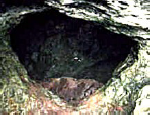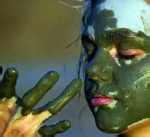Chorus Clay
Chorus Clay

Here is a list of minerals and rare earths identified in a mineral assay of the clay conducted in 2011:
Minerals: Barium, Chromium, Caesium, Gallium, Hafnium, Nobium, Rubidium, Tin, Strontium, Tantalum, Thorium, Titanium, Uranium, Vanadium, Tungsten, Zirconium, Selenium, Cobalt, Copper, Molybdenum, Nickel, Zinc.
Rare Earths: Cerium, Dysprosium, Erbium, Europium, Gadolinium, Holmium, Lanthanum, Lutelium, Neodymium, Praseodymium, Samarium, Terbium, Thulium, Yttrium, Ytterbium
In addition several healing crystalline gemstone substances have been identified in the clay by X-ray diffraction analysis conducted at the University of British Columbia:
Gemstones: Quartz, Agate, Plagioclase, K-Feldspar, Clinichlore, Actinolite (non-fibrous), Laumontite, Prehnite, Magnetite, Diopside, Molybdenite

Due to the presence of the gemstone material the Chorus Clay is quite unique in that it appears green when wet, but when applied to the skin and left to dry it turns an azure blue colour. It has been described as a "liquid crystal clay". When applied to the skin the minerals and rare earths exert a deep exfoliating and detoxifying effect on the skin.
The Chorus Clay is used in several Chorus products most notably Chorus TREAT, Chorus NIGHT and Chorus POLISH
